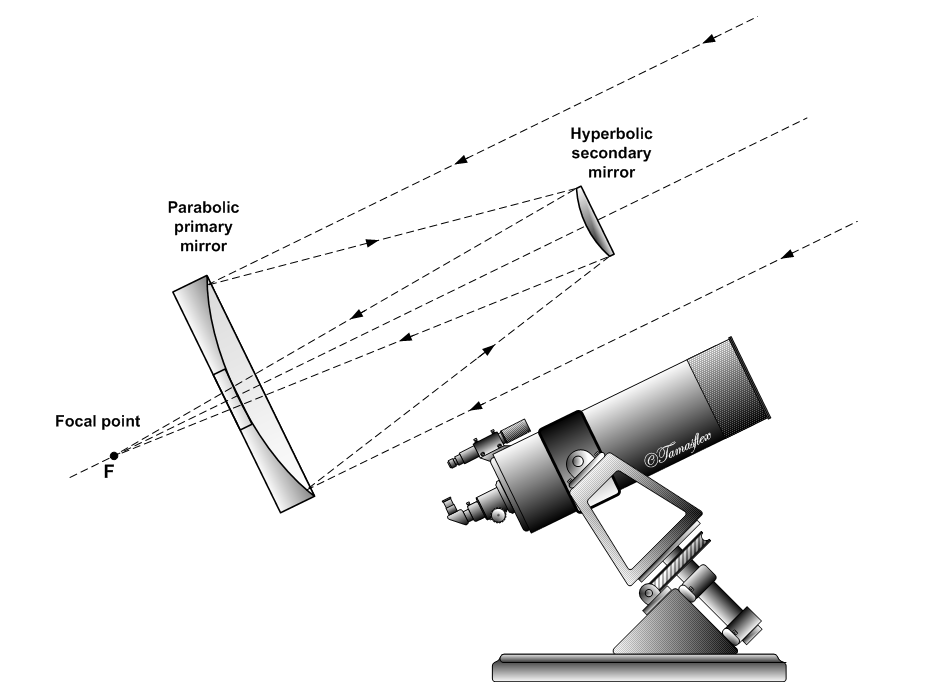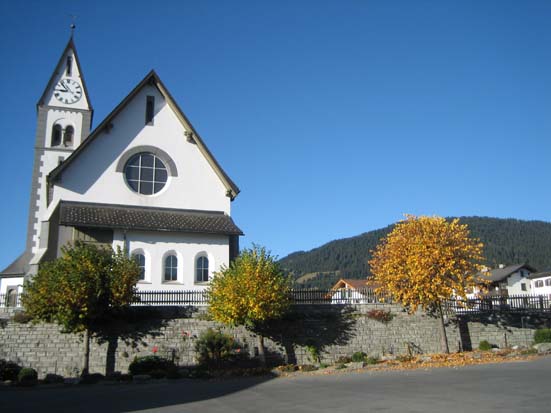|
José De Queiroz
José De Queiroz (born 9 August 1954) is a Portuguese-born, Switzerland, Swiss amateur astronomer and discoverer of minor planets, as well as a restaurant manager in Falera in the Swiss canton of Graubünden. Career Queiroz was born in Lisbon. In 1956 the family moved to Braga in northern Portugal, where José frequented school. Once graduated from a technical school, he then studied chemistry at the Instituto Superior de Engenharia in Porto. After the Carnation Revolution, José no longer felt at ease in Portugal and left the country in summer of 1974 for Switzerland. Thanks to his knowledge of languages he found a job in Ormont-Dessus, in a holiday home as a caregiver for children of wealthy parents from all over the world. After a year, however, he started to work in the tourism industry. Following several years of working as a waiter in various hotels in the canton of Vaud and in the Bernese Oberland he came to Lenzerheide in the Grisons, where he worked at the hotel "Gua ... [...More Info...] [...Related Items...] OR: [Wikipedia] [Google] [Baidu] |
Cassegrain Telescope
The Cassegrain reflector is a combination of a primary concave mirror and a secondary convex mirror, often used in optical telescopes and radio antennas, the main characteristic being that the optical path folds back onto itself, relative to the optical system's primary mirror entrance aperture. This design puts the focal point at a convenient location behind the primary mirror and the convex secondary adds a telephoto effect creating a much longer focal length in a mechanically short system. In a symmetrical Cassegrain both mirrors are aligned about the optical axis, and the primary mirror usually contains a hole in the center, thus permitting the light to reach an eyepiece, a camera, or an image sensor. Alternatively, as in many radio telescopes, the final focus may be in front of the primary. In an asymmetrical Cassegrain, the mirror(s) may be tilted to avoid obscuration of the primary or to avoid the need for a hole in the primary mirror (or both). The classic Cassegrain ... [...More Info...] [...Related Items...] OR: [Wikipedia] [Google] [Baidu] |
Falera Mirasteilas
Falera is a municipality in the Surselva Region in the Swiss canton of Graubünden. Falera is a part of the ''Alpenarena'' along with the towns of Flims and Laax and is the most secluded of the three. History Falera is a town of rich culture and history. In 1800 B.C., a settlement was started on the Mutta. This came during the Bronze Age and was very significant in the early development of what today is Switzerland. The village is first mentioned in 765 as ''Falariae''. While the first actual mention of a church in Falera was in 840-841. However, the current church was not built until 1491. The church was built on the foot of the Mutta and was named after St. Remigius. Around the church are stone pillars (megaliths or menhirs), arranged geometrically, that are said to date around 1500 B.C. Later, in the year 1903, another church was built. This church was built directly in the village and was named the Herz-Jesu-Kirche or "Heart of Jesus Church" . It, along with the origi ... [...More Info...] [...Related Items...] OR: [Wikipedia] [Google] [Baidu] |
Discoveries By José-Fernando De Queiroz
Discoveries may refer to: Media Film and television * ''Discoveries'' (film), a 1939 British film * ''Discoveries'' (TV series), a Canadian youth science television series * "Discoveries", a Series D episode of the television series ''QI'' (2006) * "Discoveries" (''Hotel Portofino''), a 2022 TV episode Literature * ''Discoveries'' (Robertson Davies), a 2002 book by Robertson Davies * ''Abrams Discoveries'', a series of illustrated non-fiction books published by Harry N. Abrams * ''Discoveries'', a work by William Butler Yeats, written in 1907 * ''Discoveries'', a magazine published by Cedars-Sinai Medical Center Music * ''Discoveries'' (Cannonball Adderley album), 1955 * ''Discoveries'' (Josh Nelson album), 2011 * ''Discoveries'' (Northlane album), 2011 Other uses * Discoveries (horse), a racehorse See also * Age of Discoveries * Discovery (other) * Explorations (other) Exploration is the process of discovery. Exploration or explorations may ... [...More Info...] [...Related Items...] OR: [Wikipedia] [Google] [Baidu] |
Discoverers Of Asteroids
Discovery is the act of detecting something new, or something previously unrecognized as meaningful, "portal". In sciences and academic disciplines, discovery is the observation of new phenomena, new actions, or new events and involves providing new reasoning to explain the knowledge gathered through such observations, using knowledge previously acquired through abstract thought and from everyday experiences. Some discoveries represent a radical breakthrough in knowledge or technology. Others are based on earlier discoveries, collaborations or ideas. In such cases, the process of discovery requires at least the awareness that an existing concept or method could be modified or transformed. New discoveries are made using various senses, and are usually added to pre-existing knowledge. Questioning plays a key role in discovery; discoveries are often made due to questions. Some discoveries lead to the invention of objects, processes, or techniques. Science Within scientific discip ... [...More Info...] [...Related Items...] OR: [Wikipedia] [Google] [Baidu] |
21st-century Swiss Astronomers
File:1st century collage.png, From top left, clockwise: Jesus is crucified by Roman authorities in Judaea (17th century painting). Four different men (Galba, Otho, Vitellius, and Vespasian) claim the title of Emperor within the span of a year; The Great Fire of Rome (18th-century painting) sees the destruction of two-thirds of the city, precipitating the empire's first persecution against Christians, who are blamed for the disaster; The Roman Colosseum is built and holds its inaugural games; Roman forces besiege Jerusalem during the First Jewish–Roman War (19th-century painting); The Trưng sisters lead a rebellion against the Chinese Han dynasty (anachronistic depiction); Boudica, queen of the British Iceni leads a rebellion against Rome (19th-century statue); Knife-shaped coin of the Xin dynasty., 335px rect 30 30 737 1077 Crucifixion of Jesus rect 767 30 1815 1077 Year of the Four Emperors rect 1846 30 3223 1077 Great Fire of Rome rect 30 1108 1106 2155 Boudican revolt ... [...More Info...] [...Related Items...] OR: [Wikipedia] [Google] [Baidu] |
1954 Births
Events January * January 3 – The Italian broadcaster RAI officially begins transmitting. * January 7 – Georgetown–IBM experiment: The first public demonstration of a machine translation system is held in New York, at the head office of IBM. * January 10 – BOAC Flight 781, a de Havilland Comet jet plane, disintegrates in mid-air due to metal fatigue, and crashes in the Mediterranean near Elba; all 35 people on board are killed. * January 12 – 1954 Blons avalanches, Avalanches in Austria kill more than 200. * January 15 – Mau Mau rebellion, Mau Mau leader Waruhiu Itote is captured in Kenya. * January 17 – In Socialist Federal Republic of Yugoslavia, Yugoslavia, Milovan Đilas, one of the leading members of the League of Communists of Yugoslavia, is relieved of his duties. * January 20 – The US-based National Negro Network is established, with 46 member radio stations. * January 21 – The first nuclear-powered submarine, the , is ... [...More Info...] [...Related Items...] OR: [Wikipedia] [Google] [Baidu] |
Occultation
An occultation is an event that occurs when one object is hidden from the observer by another object that passes between them. The term is often used in astronomy, but can also refer to any situation in which an object in the foreground blocks from view (occults) an object in the background. In this general sense, occultation applies to the visual scene observed from low-flying aircraft (or computer-generated imagery) when foreground objects obscure distant objects dynamically, as the scene changes over time. If the closer body does not entirely conceal the farther one, the event is called a '' transit''. Both transit and occultation may be referred to generally as ''occlusion''; and if a shadow is cast onto the observer, it is called an eclipse. The symbol for an occultation, and especially a solar eclipse, is 🝵 (U+1F775 🝵). Occultations by the Moon The term occultation is most frequently used to describe lunar occultations, those relatively frequent occasions wh ... [...More Info...] [...Related Items...] OR: [Wikipedia] [Google] [Baidu] |
Gnosca
Gnosca is a former Municipalities of Switzerland, municipality in the district of Bellinzona (district), Bellinzona in the Cantons of Switzerland, canton of Ticino in Switzerland. On 2 April 2017 the former municipalities of Camorino, Claro, Switzerland, Claro, Giubiasco, Gorduno, Gudo, Moleno, Monte Carasso, Pianezzo, Preonzo, Sant'Antonio, Bellinzona, Sant'Antonio and Sementina merged into the municipality of Bellinzona. History Gnosca is first mentioned in 1198 as ''Niosca'' in the records of Como and the cathedral of Milan. While it is likely that there were earlier settlements, nothing is known about them. An arbitration document of 1202 granted the S. Giovanni church and the church of SS Maurizio e Carpoforo in Gnosca Castle to Como. The parish church of St. Peter Martyr is on a list of churches in the Roman Catholic Archdiocese of Milan, diocese of Milan in the 13th century. In 1335 Gnosca is mentioned as a village in the county of Bellinzona, although part of the popul ... [...More Info...] [...Related Items...] OR: [Wikipedia] [Google] [Baidu] |
Stefano Sposetti
Stefano Sposetti (born 22 December 1958) is a Swiss amateur astronomer and a prolific discoverer of minor planets. He lives in Gnosca, in the Italian-speaking part of Switzerland in the Ticino Alps, where the Gnosca Observatory is located. Sposetti took images of 2004 FH, an Aten asteroid that made a sub-lunar flyby of Earth. In addition, he detects the optical counterparts of gamma-ray bursts and conducts transit photometry on exoplanets at his observatory. As of 2019, Sposetti's discoveries include 164 minor planets (numbered only). The Minor Planet Center The Minor Planet Center (MPC) is the official body for observing and reporting on minor planets under the auspices of the International Astronomical Union (IAU). Founded in 1947, it operates at the Smithsonian Astrophysical Observatory. Funct ... ranks him 70th in the list of all-time, worldwide discoverers. Asteroid 22354 Sposetti has been named after him. List of discovered minor planets ... [...More Info...] [...Related Items...] OR: [Wikipedia] [Google] [Baidu] |
Minor Planet Centre
The Minor Planet Center (MPC) is the official body for observing and reporting on minor planets under the auspices of the International Astronomical Union (IAU). Founded in 1947, it operates at the Smithsonian Astrophysical Observatory. Function The Minor Planet Center is the official worldwide organization in charge of collecting observational data for minor planets (such as asteroids), calculating their orbits and publishing this information via the ''Minor Planet Circulars''. Under the auspices of the International Astronomical Union (IAU), it operates at the Smithsonian Astrophysical Observatory, which is part of the Center for Astrophysics along with the Harvard College Observatory. The MPC runs a number of free online services for observers to assist them in observing minor planets and comets. The complete catalogue of minor planet orbits (sometimes referred to as the "Minor Planet Catalogue") may also be freely downloaded. In addition to astrometric data, the MPC collects ... [...More Info...] [...Related Items...] OR: [Wikipedia] [Google] [Baidu] |
Cassegrain Reflector
The Cassegrain reflector is a combination of a primary concave mirror and a secondary convex mirror, often used in optical telescopes and Antenna (radio), radio antennas, the main characteristic being that the optical path folds back onto itself, relative to the optical system's primary mirror entrance aperture. This design puts the Focus (optics), focal point at a convenient location behind the primary mirror and the convex secondary adds a Telephoto lens, telephoto effect creating a much longer focal length in a mechanically short system. In a symmetrical Cassegrain both mirrors are aligned about the optical axis, and the primary mirror usually contains a hole in the center, thus permitting the light to reach an eyepiece, a camera, or an image sensor. Alternatively, as in many radio telescopes, the final focus may be in front of the primary. In an asymmetrical Cassegrain, the mirror(s) may be tilted to avoid obscuration of the primary or to avoid the need for a hole in the prima ... [...More Info...] [...Related Items...] OR: [Wikipedia] [Google] [Baidu] |
Sternwarte Mirasteilas
The Mirasteilas Observatory (; Romansh language, Romansh for "stargazer") is an astronomical observatory in Falera in the canton of Grisons in Switzerland. With its 90-centimeter telescope it is the largest publicly accessible observatory in Switzerland. History In 2001, the Portuguese-born local community member José De Queiroz, innkeeper in Falera and a member of the Astronomical Society of the Grisons (Graubünden), organized the first astronomy meeting in Falera. Owing to its easy accessibility, its elevated position on a terrace with a broad sky to the west, south, and east and low light pollution, the place offers ideal conditions for observing celestial bodies. During the next star party, telescope meeting in Falera in 2002 the question was raised whether an observatory could be created here. The municipal council recognized that the construction of an observatory could be a big gain for the village, since no similar investment had been made in the Grisons by that time. ... [...More Info...] [...Related Items...] OR: [Wikipedia] [Google] [Baidu] |






